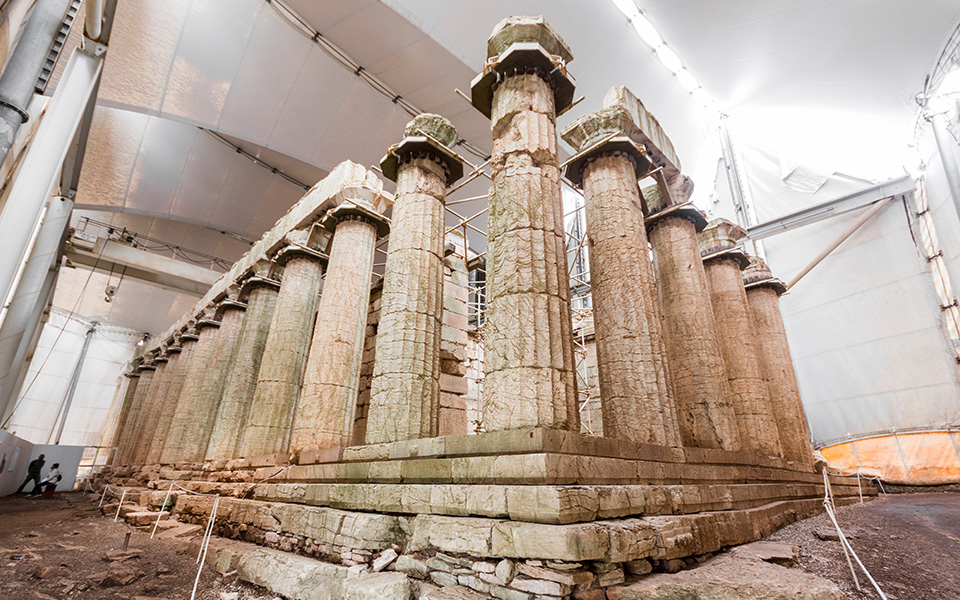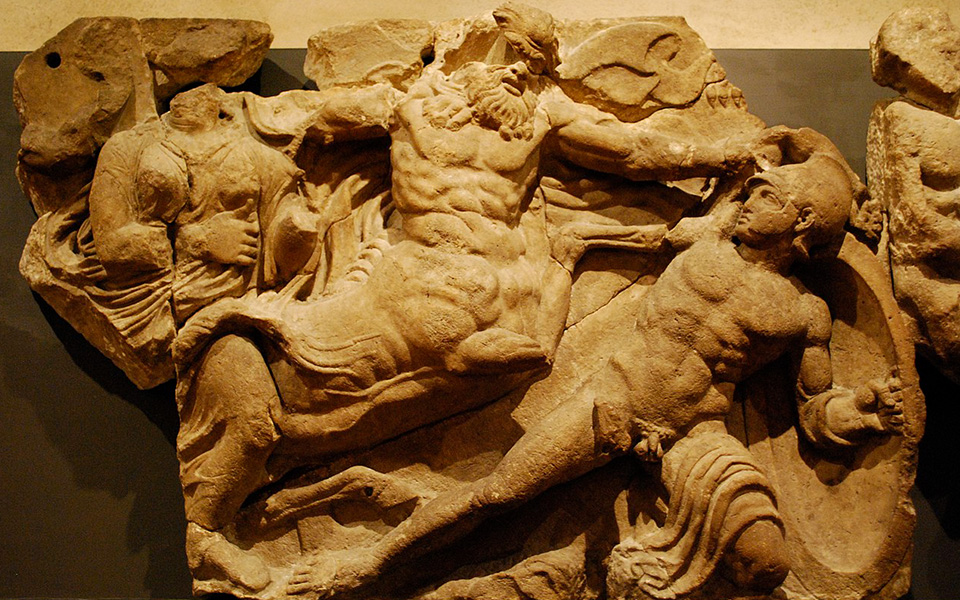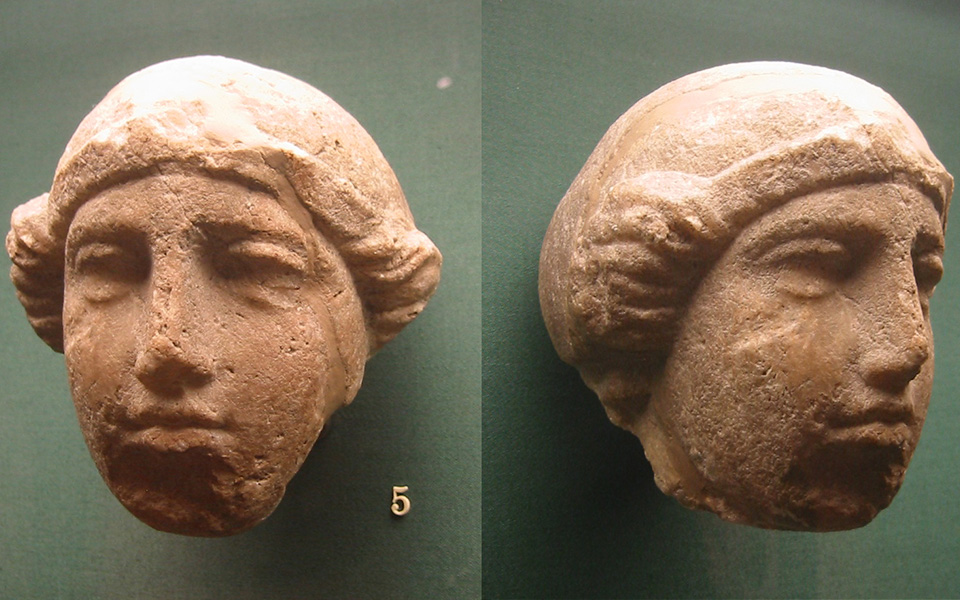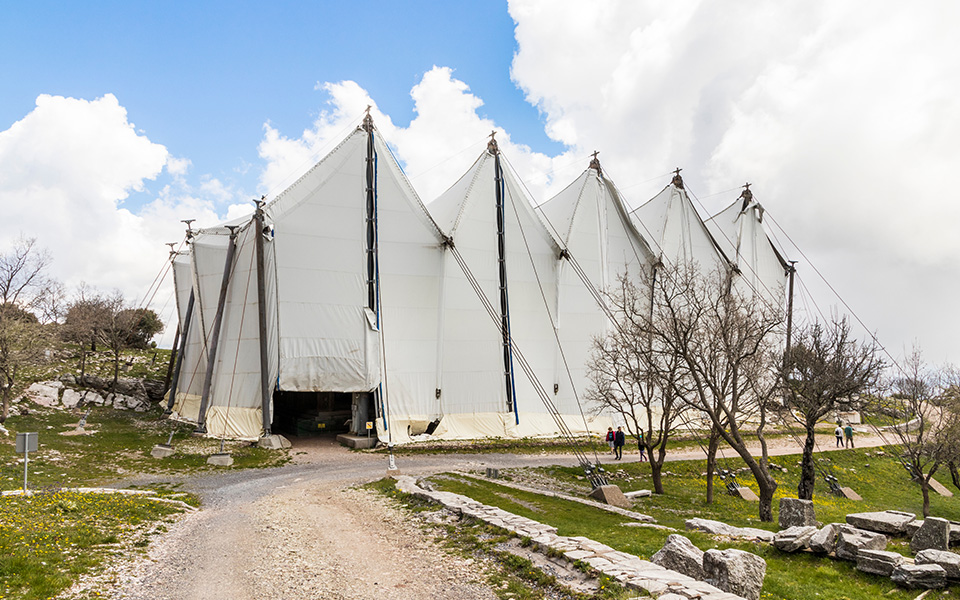Tucked away within the rugged mountains of southwest Arcadia within the Peloponnese stands a marvel of historical Greek structure, the Temple of Apollo “Epikourios” at Bassae. Designated as a UNESCO World Heritage Site in 1986 – the primary Greek website to be inscribed on UNESCO’s Listing – this magnificent temple is also known as “The Parthenon of the Peloponnese,” owing to its architectural grandeur and historic significance.
Although geographically distant from main historical Greek city-states, on the crossroads of the areas of Ilia (Elis), Arcadia, and Messinia, the venerable temple, now lined with a protecting tent, stands out as one in every of Greece’s most studied monuments. Its uncommon architectural and creative parts have made it a focus for researchers and archaeologists for hundreds of years, in search of to raised perceive the complexities of historical Greek architectural methods and the event of spiritual artwork.
Within the following sections, we’ll discover the wealthy historical past, architectural options, and cultural significance of this outstanding monument, which, subsequent to the Temple of Hephaestus in Athens, is top-of-the-line preserved temples in Greece.
In Excellent Concord
The Temple of Apollo at Bassae was constructed within the latter a long time of the fifth century BC, throughout the Excessive Classical interval of historical Greece. Most students agree that it was constructed throughout the Peloponnesian Conflict (431-404 BC), fought between Athens and Sparta and their respective allies.
Constructed atop the western slope of Mount Kotilion, 1,131m above sea degree, the temple is in excellent concord with its surrounding panorama, boasting panoramic views of the Arcadian highlands. Students consider its development was commissioned by the folks of the close by city-state of Phigaleia, 13km southwest.
In response to the Greek traveler Pausanias, writing within the 2nd century AD, the temple was the work of the famend Iktinos, architect of the Parthenon, though some trendy historians doubt this to be true, because of refined however vital variations in design.
Whoever constructed it, Pausanias believed it to be among the many most interesting temples within the Peloponnese:
“Of the temples within the Peloponnesos, this may be positioned first after the one at Tegea for the great thing about its stone and for its symmetry.”

© Shutterstock
A Plague Temple?
Its distant location and the dedication to Apollo Epikourios (“Apollo the Helper”) recommend that it was constructed to commemorate a army victory. In his well-known “Description of Greece,” Pausanias notes that the Phigaleians fought a number of wars and revolts towards Sparta within the seventh and sixth centuries BC, and ca. 421-414 BC, throughout the Peloponnesian Conflict, and once more in its rapid aftermath, ca. 401-395 BC.
Mercenaries from numerous city-states in Arcadia are additionally identified to have fought for Messinia of their many wars towards Sparta. As such, the epithet “epikouros” might merely consult with “an ally” or “mercenary,” commemorating the exploits of Phigaleian troops.
One other situation is that it was constructed to supply thanks for deliverance from a lethal plague that the area. In the identical passage as above, Pausanias describes how Apollo saved the Phigaleians from a plague, in the identical manner he had helped the Athenians – a reference to the essentially the most deadly pandemic in Classical Greek historical past (the Plague of Athens, 430-427 BC), which worn out practically one third of town’s inhabitants:
“Apollon acquired his title from the assistance he gave in time of plague, simply because the Athenians gave him the title of ‘Alexikakos’ (Averter of Evil) for turning the plague away from them. It was on the time of the struggle between the Peloponnesians and the Athenians that he additionally saved the Phigaleians …”
As a sanctuary devoted to Apollo, the patron god of music, poetry, and prophecy, pilgrims from throughout the Greek world would have traveled to Bassae to hunt solace and steerage. Devotees introduced choices to the god as tokens of their devotion and gratitude, starting from easy presents of meals and wine to elaborate votive choices comparable to statues, jewellery, and weapons and armor. In return for his or her choices and prayers, worshippers believed that Apollo would grant them his favor and safety.

© Sarah Murray / Public area
Non-Canonical Options
The temple at Bassae was constructed on the location of an earlier, smaller model (600-570 BC) and boasts a number of distinctive architectural options that set it other than different temples in Greece.
In contrast to the vast majority of temples, which have been constructed on an east-west axis, Bassae is aligned north-south, with its principal entrance from the north. This uncommon orientation was necessitated by the restricted house accessible on the steep western slope of Mount Kotilion. A door was positioned on the east aspect of the temple, presumably to permit the morning solar to light up the cult statue inside.
The temple consists of three primary sections: the “pronaos” (entrance), the “naos” (interior chamber), and the “opisthodomos” (rear room). Constructed virtually solely out of regionally sourced gray Arcadian limestone-schist, the temple at Bassae is comparatively modest in dimension. Its stylobate (stepped base) measures 38.3 by 14.5m and incorporates a Doric peristyle (outer colonnade) of six by fifteen columns.
Unusually, the inside ceiling was made solely of stone, together with the beams and rafters; a outstanding feat of architectural engineering. Whereas it has been proposed that there was a central open house within the roof to confess gentle and air, there is no such thing as a definitive proof of this function.

© Public area
A Stylistic First
One of the outstanding options of the temple at Bassae is its incorporation of all three classical orders of historical Greek structure: Doric, Ionic, and Corinthian. The peristyle is shaped by Doric columns, whereas Ionic columns help the inside.
Contained in the naos, a single Corinthian column as soon as stood, presumably supposed as an aniconic illustration of Apollo Borealis (“Apollo of the Chilly North Wind”). The column’s capital, adorned with acanthus leaves, is the earliest identified instance of this order discovered to this point. It’s mentioned that it mirrored the primary rays of the solar on the Summer time Solstice, representing the everlasting Apollonian gentle.
Whereas comparatively sparsely adorned on the outside, the temple’s inside featured a steady Ionic frieze depicting scenes from Greek mythology. Of the 23 marble slabs of the frieze, 12 inform the story of the battle between Greeks and Amazons (Amazonomachy) and the remaining eleven current the legendary battle between Lapiths and Centaurs (Centauromachy). Different scenes, depicted on the metopes of the pronaos, painting the Dioskouroi (Castor and Pollux) raping the daughters of Leucippus, a king of Messenia, and Apollo coming back from Mount Olympus.
Sadly, the slabs of this 31m-long frieze have been first revealed after which plundered by English architect and author Charles Robert Cockerell in 1811-1812, and are actually housed within the British Museum – an act that mimics the controversial elimination of the Parthenon Marbles by Lord Elgin within the first years of the nineteenth century.
On his return to England, Cockerell made plaster casts of the frieze, which could be seen at this time in the Ashmolean Museum’s Nice Staircase in Oxford and the Travellers Membership in London.

© Shutterstock
Rediscovery and Restoration
Within the early Christian period, the venerable temple was finally deserted and fell into disrepair, its as soon as majestic roof collapsing into the inside, inflicting intensive injury. Regardless of this, the outer colonnade (peristyle) remained standing, a silent witness to the passage of centuries.
For some fifteen hundred years or so, the temple remained largely forgotten, till, in 1765, British architect and antiquarian James Stuart, alongside together with his colleague Nicholas Revett, stumbled upon its ruins whereas conducting a survey of historical Greek structure. Their discovery marked the start of a brand new chapter for the traditional website. Excavations commenced within the early nineteenth century and continued for a number of a long time, revealing most of the temple’s unique architectural parts and sculptures.
Nonetheless, the temple’s journey from break to restoration was not with out its challenges. Pure disasters, vandalism, and the relentless march of time threatened its survival. But, due to ongoing restoration efforts, a lot of the temple has been preserved for future generations.
Starting in 1902 and lasting till 1908, the primary critical restoration effort aimed to stabilize the temple’s construction and restore broken architectural parts. This was solely the start of a collection of efforts to safeguard the temple. From 1982 to 1997, additional measures have been taken to make sure the temple’s longevity. An anti-seismic scaffold was put in in 1985, adopted by the set up of lightning safety in 1986. In 1987, a brief shelter (tent) was erected to defend the temple from the area’s excessive climate situations.
These restoration efforts, spearheaded by the Greek Ministry of Tradition and in collaboration with worldwide organizations comparable to UNESCO, have been important in preserving this vital cultural landmark for future generations.



Recent Comments